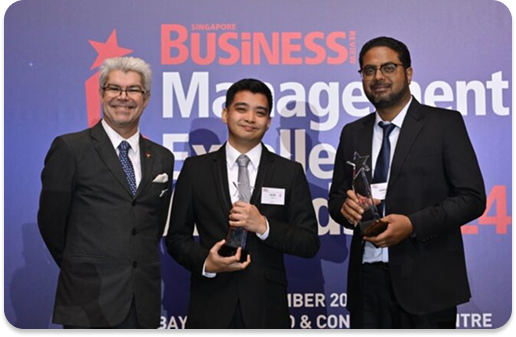With different available models of customer service, customer service schemes aren’t as straightforward as you think. You may think that businesses in different industries approach customer service similarly. However, it’s much more complex than that. Companies choose a specific customer service model to interact with their clients. Other companies may implement an entirely different model.
The most effective customer service models are based on the company’s services, goals, and values. No two strategies are the same. This guide focuses on:
- Defining a customer service model
- Understanding the different customer service model types
- Providing tips to adopting the best model
Table of Contents
1. Definition Of Customer Service Models
A customer service model refers to a company’s set of policies and strategies to provide customer service. Some organisations have excellent foresight in developing a model from the get-go. Yet, some businesses get clarity only when they start operations. It is only then that they can formulate tactics that positively impact their target consumers and behaviours.
2. Customer Service Model Types
There are currently 8 types of customer service models used by organizations, namely:
- Convenient
- In-depth, personalized service
- One team
- One-on-one contact
- Self-service
- Online service
- Redirected service
- Combination models
Convenient
Customers nowadays are attracted to quick and convenient services. They want things done fast, and they want them done yesterday. Convenience sets the baseline for arguably the most common type of customer service model.
Businesses may not necessarily provide custom-fit and personalized services in a convenient model. However, their success is thanks to a cost-effective and convenient service.
For example, you own a business that provides essential items like face masks. Customers buy from you because these items are a necessity. They will remain in high demand until the foreseeable future.
When customers visit your store, they do not expect to be badgered by sales representatives. They prefer to be left alone, which is why you may take on a limited customer service approach. A hands-off customer service stance is helpful if your company is based largely on convenience.
In-Depth Personalized Service
Imagine you’re buying steel materials for a home construction project. Would you prefer jumping through multiple channels and hoops to get more information about the materials? Or would you rather talk to a single individual with considerable expertise?
More often than not, you’ll choose the latter. Coordinating with one person saves time. It allows you to experience personalized and custom-fit service.
Some companies provide their customers with in-depth, personalized services because they are appealing. This situation is observable in an industry where the product is a bit more valuable. It requires extensive care and attention before customers purchase them.
In this customer service model, only one employee communicates with the customer. The customer gets in-depth information about their needs, wants, and preferences. In this case, employees need to act swiftly and effectively. Businesses that use this model must invest in staff training and skills development. It can be more expensive compared to a convenient model.
One-Team
The one-team model is based on a certain understanding. If businesses want to thrive, they must be able to solve their customers’ problems. They must also create an environment that develops this problem-solving ability.
The one team model can be effective by setting proper expectations. Companies must invest in continuous improvement and consistency of their staff.
A one-team model needs fully trained employees to handle all aspects of customer service. For example, in an IT (Information Technology) helpdesk, CS employees help customers by consulting with their colleagues.
If they don’t know the solution to a customer’s concerns, they don’t delegate the customer to another employee. Instead, they put the client on hold for a few seconds and collaborate with the staff to find a solution.
A one-team model is only effective if the organization values communication. Communication boosts teamwork for better collaboration, improved productivity, and more profit.
One-On-One Contact
The one-on-one contact may seem similar to the in-depth, personalized service. However, there are a few differences. The service is less personalized, and the customer-employee ratio is 1:1.
An example of this model is call center employees or a salesperson who talks to a single customer. The level of personalization isn’t as extensive as the other model, particularly during after-sales. This is because the customer will likely talk with a different employee in the future, for further assistance.
Self-Service
Self-service models are usually used in combination with other models. But, it involves a significantly lesser degree of customer interaction.
This is arguably the most sales-driven among the other customer service models. The idea of self-service is that customers assist themselves in purchasing the product they want. They won’t have to talk to another salesperson to finalize a transaction.
Fast food restaurants practice the self-service customer service model through their self-serve kiosks. Customers walk up to a touchscreen input machine, choose menu items, check out the order, and pay through cashless methods.
However, the self-service structure may not be favourable to just any business model. It’s different for service-based organizations. Customer satisfaction is better achieved through customized services. In such cases, live interactions are more effective at solving customer issues and queries.
Online Service
Online customer service is becoming increasingly popular among companies. This model involves live chat options on a website or ecommerce platform. Emailing is another example whereby customers can contact a CS staff for help.
The online customer service model is popular among online-only companies, but they’re also helpful for others. Instead of visiting a physical store, customers will ask available online staff for help.
Hybrid Models
Modern companies have become adept at handling customer concerns by implementing hybrid solutions. You’ll rarely find a company that uses only a single model to meet customer needs. They will often use a combination of two or more models discussed above.
Let’s say you run an internet service provider. Many customer complaints you receive have to do with reconnecting a line or dissatisfaction with the internet speed.
The customer wants the issue to be solved quickly. They expect you to have a dedicated online platform that also allows self-service. A live chat bot will prompt them with questions they will answer regarding the following:
- Account number
- Internet package
- Upgrades
- Connection speed
A hybrid of online (AI) and self-service can often solve the problem. Unless the customer did not find what they were looking for, the issue wouldn’t demand the need for live personnel assisting them.
3. How To Choose A Customer Service Model

There is no one-size-fits-all solution to good customer service. It is a product of trial and error. A model may work perfectly well for one company but poorly for another.
Below are some considerations for choosing a model that helps you meet business-specific needs.
Examine Your Business Requirements
First, you must assess what your company needs and what you can offer your customers. For instance, if you’re selling luxury cars, you’ll want to make customers feel valued and cared for throughout the process. This means providing them with an in-depth service can be the most efficient out of all the models.
However, if you’re not in the luxury car trade, you’ll need a different approach. It’s about finding what does and doesn’t work for your customers.
Evaluate Your Customer Service Team
Once you know which customer service models work best, you can evaluate your current CS staff. If you’re a manager, you must refer to past performance reviews and identify each employee’s strengths and weaknesses.
Use these insights and any information you’ve gathered to know which model to use. For instance, one employee may be adept at communicating through technology. However, they’re currently interacting with customers face-to-face. Use this as an opportunity to hone what they’re good at. Provide online channels to the employee, so they may improve their problem resolution skills.
Bridge Customer Service And Employee Gaps
Sometimes, you will need to train your staff to develop efficient CS skills. If you find that the best CS model for your company requires new skills your current staff does not have, training them or hiring new talents is a good idea.
Make it a point to gather feedback from your employees. Ask about their skills set, and find opportunities to incentivise them with benefits in return for their training.
Depending on which structure you end up with, know that implementing the changes may take time and effort. Expect your company to reorganize or craft new instructions for customer-facing staff.
Conclusion
This guide is not a comprehensive list of all customer service schemes practized in organizations. However, it provides insightful ideas on adopting a structure befitting your industry.
Ultimately, the best strategy is to determine customer service aspects which could be changed or improved. Only then can you decide on a successful blueprint for your business.
For more information, contact Gear Inc. We offer advanced business solutions to help you cut back on customer service expenditure without compromising quality.
Our services include content moderation, customer care, data entry, data labelling, and game management. Call us now and learn how we can make a difference to your team.
Frequently Asked Questions About Customer Service Models
These are the 4Ps of any successful customer service design;
- Promptness
- Politeness
- Professionalism
- Personalization
If you’re a business, it will help to put yourselves in your customers’ shoes. You’ll also find that these characteristics are what you expect from a company.
- Understand your customer’s needs and wants
- Don’t overwhelm your customers with a bulk of choices
- Upskill your agents and provide them with good information
- Improve the agent experience
- Have a knowledge strategy in place
- Listen to customer feedback
Customer Modeling is the process of predicting customer behaviour. This is done through targeted marketing campaigns and improving predictive analysis.
The customer satisfaction model involves three factors:
- Quality
- Value
- Expectations
These factors impact customer service. It could result in either customer complaints, or loyalty. It depends on the company’s ability to meet them.
Gear Inc.














